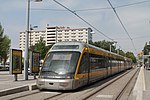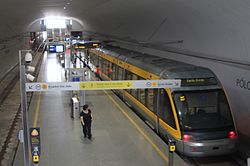Instituto Superior de Engenharia do Porto
Polytechnic of Porto - School of Engineering (ISEP) is a public polytechnic higher learning and research engineering institute, located in the city of Porto, Portugal. ISEP is divided in 8 departments, with an emphasis on applied science and technology. ISEP was founded by the minister Fontes Pereira de Melo in 1852 as Escola Industrial do Porto (Porto School of Industry) to support the industrialization of Portugal, and some time later upgraded to Instituto Industrial do Porto (Porto Institute of Industry). Since 1989, was grouped with other schools in the Polytechnic Institute of Porto. Its motto is Saber Fazer — "Know-how". Today, ISEP is one of the biggest and best known engineering schools in Portugal, with well over 6000 students and 500 faculty members. It has research facilities for real-time systems, artificial intelligence, knowledge based systems, and decision support systems, some of them internationally recognized as leading R&D centers (e.g. GECAD, CISTER, LSA) as accredited by the Fundação para a Ciência e a Tecnologia of the Portuguese Ministry of Science, Technology and Higher Education.
Excerpt from the Wikipedia article Instituto Superior de Engenharia do Porto (License: CC BY-SA 3.0, Authors).Instituto Superior de Engenharia do Porto
Rua Doutor António Bernardino de Almeida, Porto Paranhos
Geographical coordinates (GPS) Address Nearby Places Show on map
Geographical coordinates (GPS)
| Latitude | Longitude |
|---|---|
| N 41.178055555556 ° | E -8.6080555555556 ° |
Address
I
Rua Doutor António Bernardino de Almeida
4200-135 Porto, Paranhos
Portugal
Open on Google Maps









